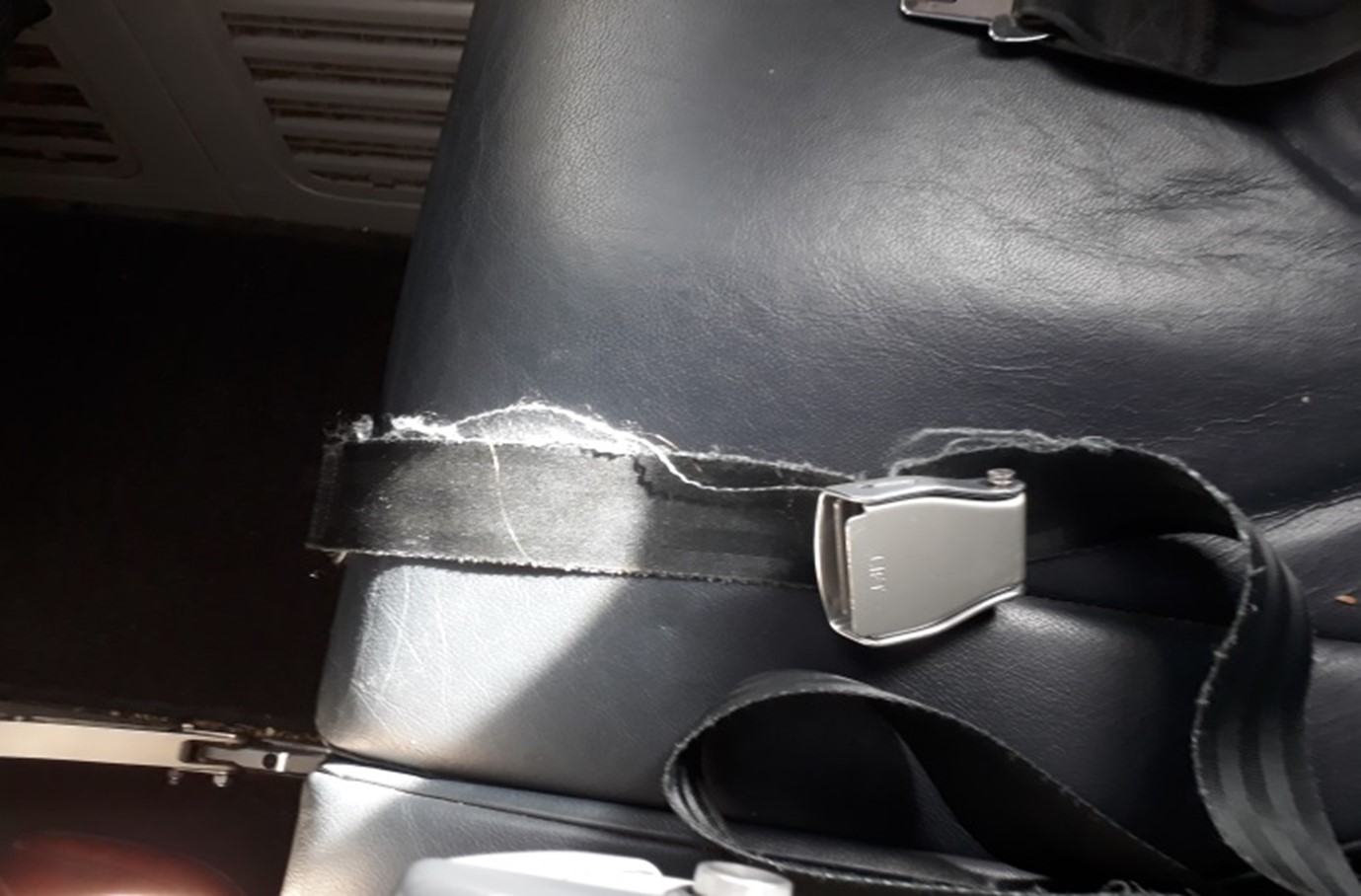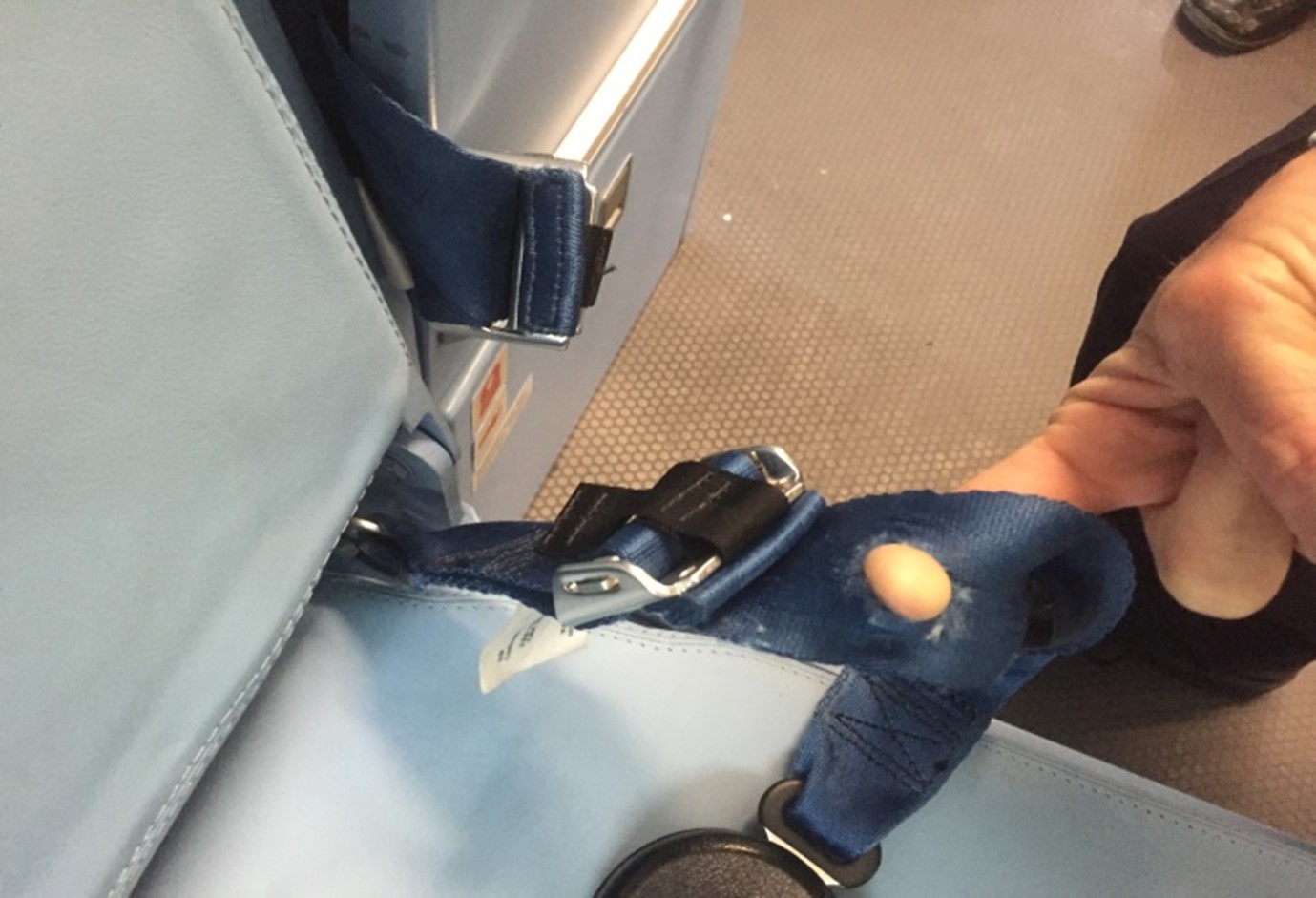Flight and cabin crew are responsible for checking and reporting unserviceable passenger seatbelts and crew safety harnesses.
The following guidance is for air transport operators to remind crew members about this important role.
This is a collection of advice from our Cabin Safety Bulletins series. You can read our full technical documents at Cabin Safety Bulletins.
Reporting unserviceable belts and harnesses
CASA surveillance activities and reports from the public highlight the need for more regular checking of passenger seatbelts and crew safety harnesses.
Operators need to check and report the condition and serviceability of seatbelts and harnesses on a regular basis.
The following photos show both a passenger seatbelt and crew harness displaying poor seatbelt and harness conditions.
The vital role of seatbelts and harnesses
Statistics in both motor vehicle and aircraft accidents show that 'seatbelts save lives'.
They also prevent injuries in certain situations on aircraft such as moderate to severe turbulence and abnormal inflight situations.
Seatbelts and harnesses need to be in a condition where they can be effective when you need them most.
The United States National Transportation Safety Board report on the Asiana accident in 2013 highlighted the importance of seatbelts in an aircraft accident.
Asiana Airlines flight 214 crashed into the end of the runway in San Francisco on July 6, 2013. Three people died and hundreds injured in the accident. Of the 3 people who died, 2 were not wearing their seatbelts.
Don't wait until there is a maintenance inspection
Checking seatbelts and harnesses doesn’t just happen during the maintenance cycle. Air operators should make sure their crew membersare checking check the condition of seatbelts and harnesses on a daily basis.
Crew members need to record any problems in the operator's defect reporting system.
For example, some operators have a cabin condition log process. This process may involve aircraft cabin crew recording deficiencies and then transferring into the aircraft maintenance log.
When looking at the condition of seatbelts and harnesses they should be looking for:
- fraying, tears, creases or if it looks crushed
- broken stitching or missing stitches
- obvious holes
- buckle is defective, shows excess wear or deformity
- can't adjust (hard to pull through)
- twisted
- anything else that may affect the normal use of the restraint.
Further information
You can report defects through our Defect Reporting Portal. You can also contact direct on 131 757 and ask to speak to a cabin safety inspector.



